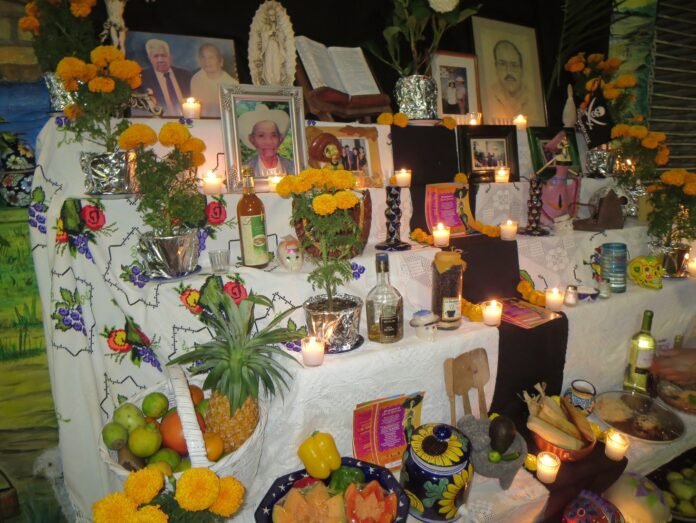Dia de Los Muertos, or Day of the Dead, is an important celebration in Mexico. It is a social and religious ritual with a parade and all-night candlelight vigils at the graves of family members in local cemeteries.
The whole occasion is festive, and everyone talks of the dead as if they were still alive. The main focus of this celebration is to honor the ancestors who have passed, adults and children both.
There are many components to this festivity. Ofrendas or altars dedicated to the memory of a departed loved one are the most important. Ofrendas are elaborate creations that take hours to construct and feature pictures of the deceased, poems, letters, trinkets, and other memorabilia, along with items that belonged to them, such as a favorite hat or musical instrument. You will also find favorite food items like plates of enchiladas, beans, bottles of tequila, fruit, and the traditional sweet bread “pan de muerto,” often decorated with bone-shaped designs.
SYMBOLOGY
Every ofrenda also contains gifts that represent the four cardinal directions with their elements: water, wind, earth, and fire.
Water: Family members leave a pitcher or glass of water at the ofrenda so the spirits can quench their thirst on their journey back to their families.
Wind: Colored papel picado, a traditional paper banner, whose colors and holes make it easy for the spirits to find their way to the altar.
Earth: It is common to bring food for the spirits, especially “pan de muerto,” as well as other favorite items like mole, chicken, tortas, and tacos.
Fire: Candles, often arranged in the form of a cross, represent light to help the spirits find their way through the dark.
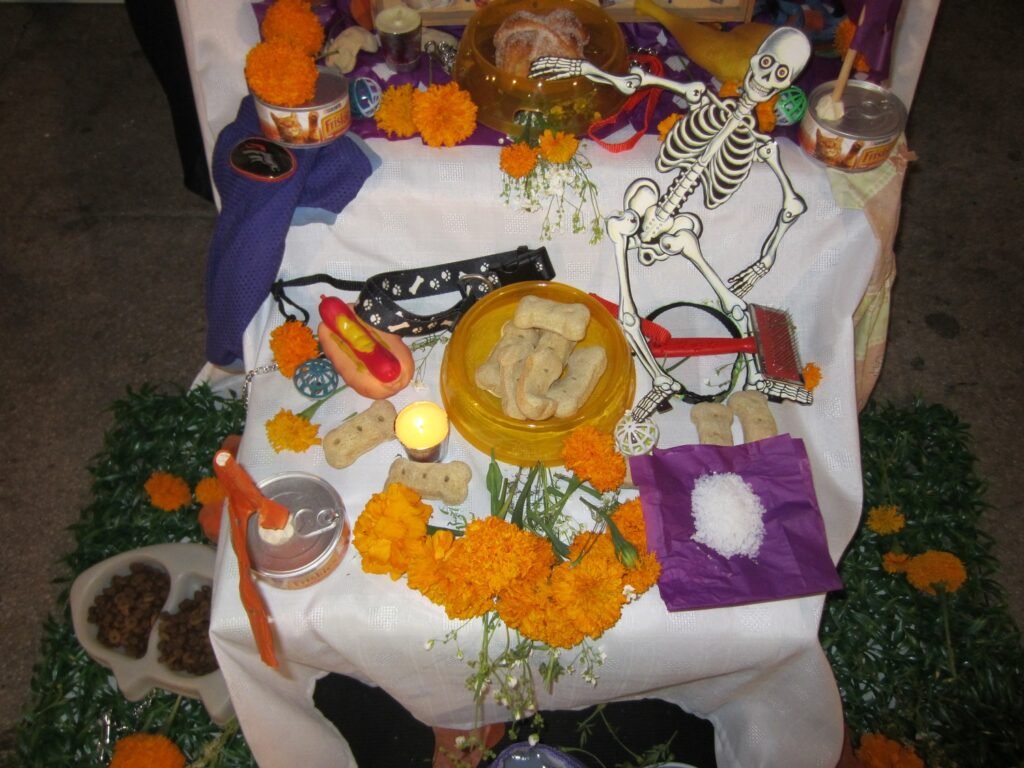
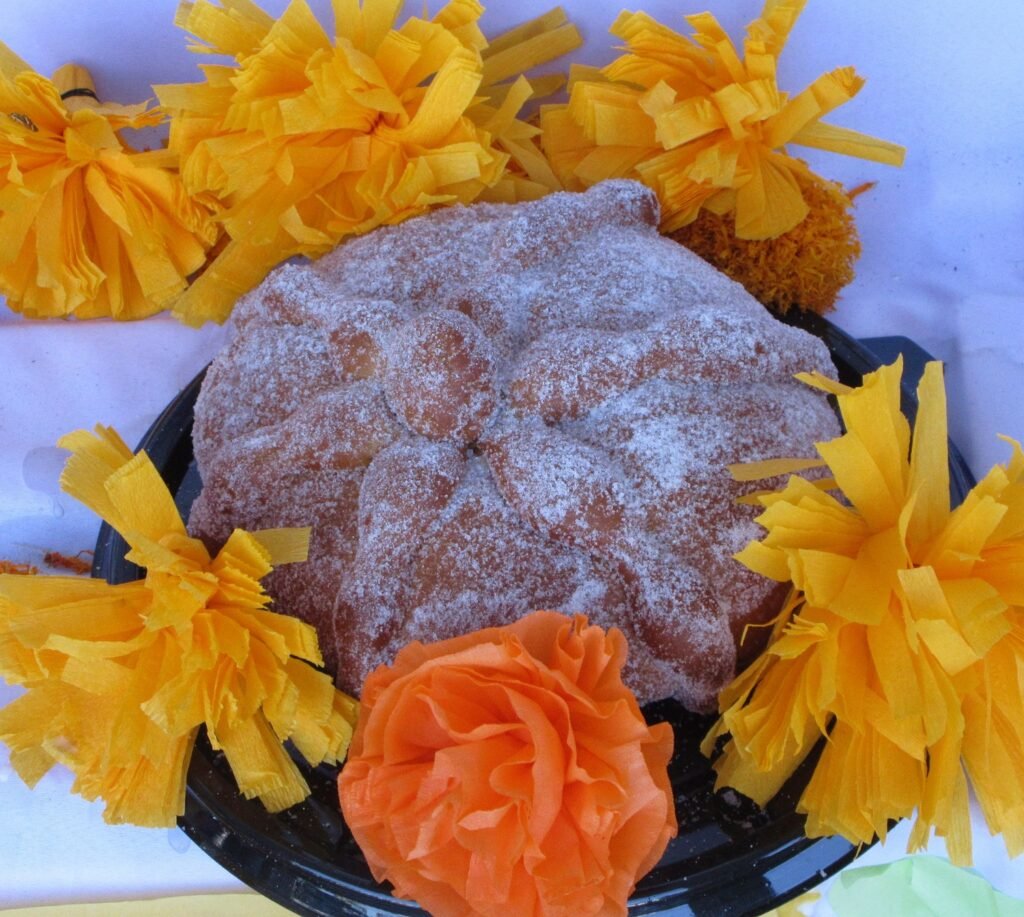
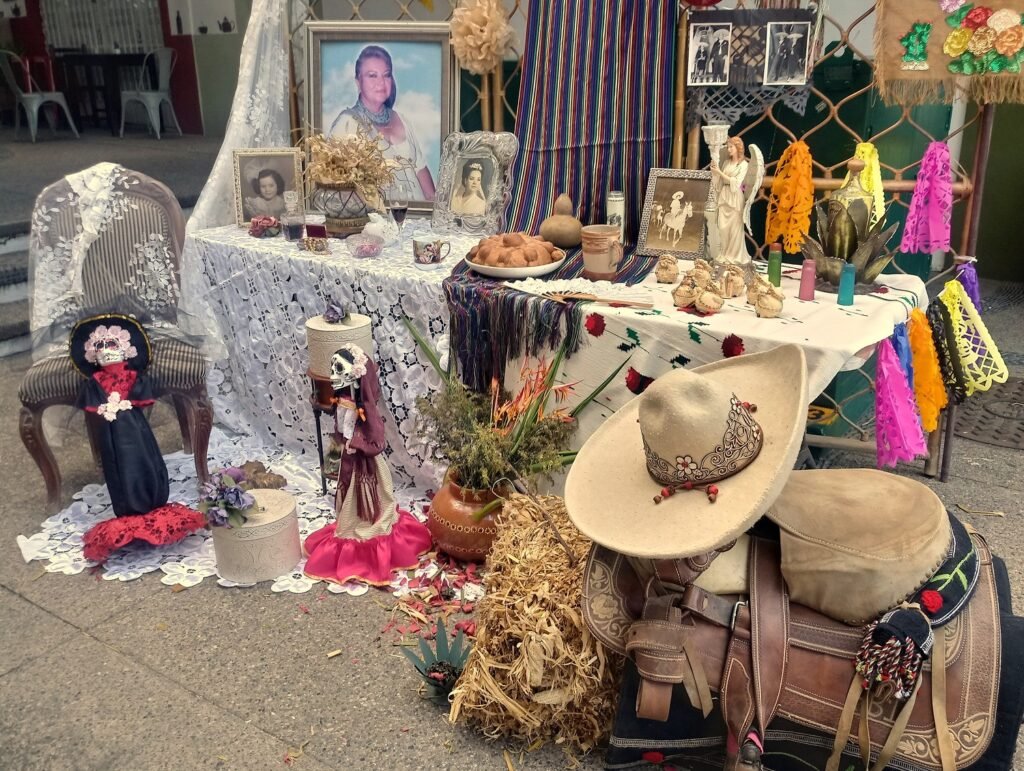
Salt: Often found on ofrendas in small ceramic bowls or in the shape of a cross, represents purification, which helps the body of the dead not to be corrupted by its journey.
Ashes: Can be used to mean respect for the dead or to remind us that we all symbolically return to ash when the body dies.
Also noteworthy on the ofrendas and throughout the holiday are marigolds, or cempasuchil, as they are known in Mexico. Their bright color and strong scent help to guide the ancestors back home to visit their families. According to ancient Aztec tradition, orange and yellow represent the sun, love, light, and the shortness of life. Petals of this flower are laid out as walkways to help spirits find their way back to earth.
Other colors have meanings when used on the ofrendas. For example, purple represents pain, grief, and suffering. The symbolism of purple is a later influence of Catholicism, wherein purple symbolizes sadness and mourning. White is recognized as a symbol of purity and hope and are usually represented by white candles.
OFRENDA DEDICATION
Altars to ancestors vary significantly in their presentation, from simple to very elaborate. Most of them you will see around City Hall in the central plazas of Mexican towns. Hotels, restaurants, schools, and businesses may also have ofrendas in their locations dedicated to employees who are no longer living.
Families also have ofrendas in their homes, wanting the privacy of their surroundings.
The building of the ofrendas begins a week before November 1, the official first day of Dia de Los Muertos. This day is dedicated to children who have died.
November 2 is for adults who have died.
In addition to ofrendas dedicated to family members, you will see famous people like Frida Kahlo, Carlos Fuentes, or Cantinflas, the renowned comedian. There are ofrendas for pets, government officials, musicians, and organizations like Breast Cancer and Violence Against Women for example.
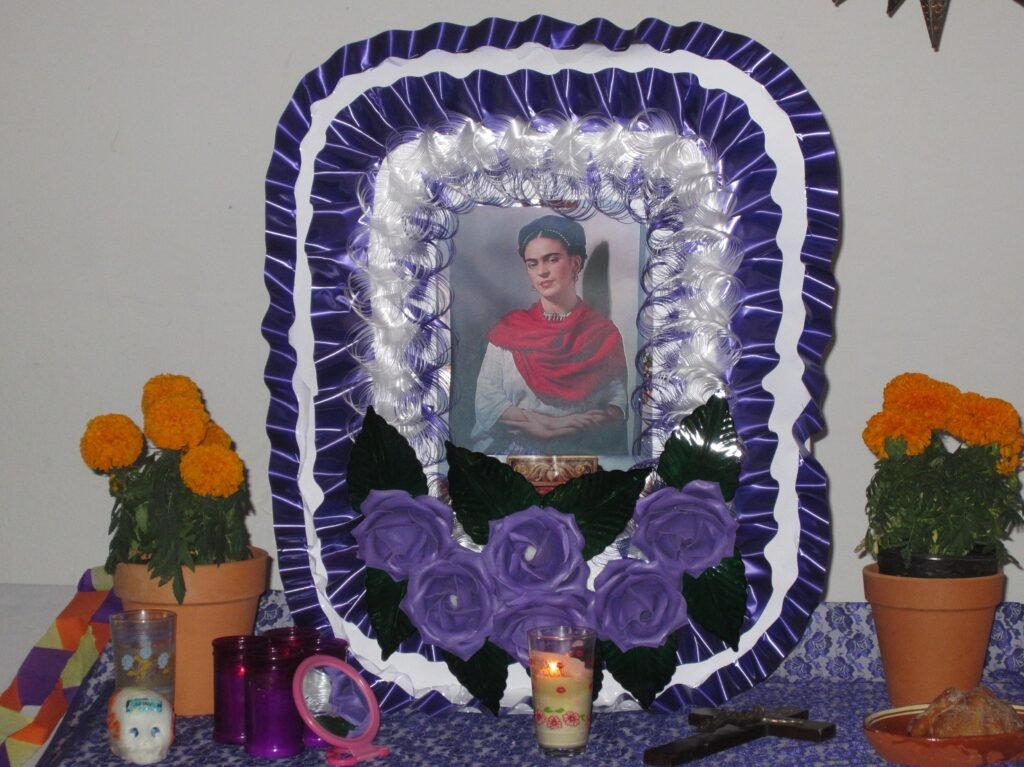
Here in Puerto Vallarta, Dia de Los Muertos is one of our largest celebrations, bringing folks from all over to view the ofrendas, the decorated cemeteries, and to watch the parade of catrinas and people dressed as such with their faces painted like skeletons.
Walk the streets of Vallarta to see many of these beautiful offerings outside homes, government buildings, hotels, and stores. And take a moment to appreciate the meaning and value of celebrating our ancestors as we do in Mexico.

